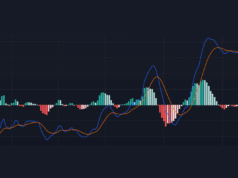The 3 G’s – geology, government policy, and geography – are responsible for Australia’s appeal among currency traders. Geology has provided the country with a plethora of in-demand natural resources.

Geographically, the country has established itself as a preferred trading partner for many fast-growing Asian economies with near-insatiable resource demands. Government policy has resulted in relatively constant high-interest rates, a stable government and economy, minimal currency market involvement, and a Western approach to business and the rule of law that has not always been customary in the region.
Commodity prices and terms of trade
Over a long period, the terms of trade and the value of the AUD have had a strong association. The terms of trade measure the ratio of export prices to import prices. An increase in trade is often culminated by the rise in the AUD’s value, whilst a decrease in the same causes a plummeting of AUD’s value.
Here, the term commodities refer to iron ore, coal, gold, natural gas, and agricultural products. Their prices have a direct impact on terms of trade. This is because commodities make for a substantial portion of Australia’s exports; hence changes in commodity prices affect export prices.
An increase in the price of coal, for example, usually results in an overall higher yield from exports and improved terms of trade. The higher the commodity export prices, the more AUD will be needed to acquire the same amount of these commodities. This is linked to a rise in demand for the AUD and a subsequent rally in its value.
Commodity prices and trade terms can also impact the Australian economy by attracting more investment. Exporters may choose to invest in expanding their production capacity to take advantage of better export prices when commodity prices rise. This investment is often financed by money moving into Australia from abroad, which boosts demand for AUD and can lead to a rise in its value.
Purchasing power parity (PPP)
When evaluated in a common currency, PPP argues that prices should be comparable across countries. This notion states that two currencies are in equilibrium (or at par) when a basket of commodities is priced the same in both nations after exchange rates are taken into consideration.
PPP is a method used by economists to compare Australia’s economic output to other countries. It can be used to identify which country has the largest economy.
Traders in foreign currency and investors in foreign equities and bonds in Australia can benefit from the potential value. If the value is reasonable, many investors will rush to Australia, boosting the country’s economy.
Interest rate differential
This is the difference between interest rates in Australia and those in other economies. It is a major driver of AUD demand and supply. It’s also a big driver of capital flows, which tracks how much money comes in and goes out of Australia for investment.
The focus is usually on the interest rate differential between Australia and the main advanced countries, such as the United States (US), Europe, and Japan when it comes to the AUD. Negative economic news in the United States, according to conventional theory, should lead to an increase in the AUD’s value relative to the US dollar, assuming all else is held equal. Around the time of US data releases, volatility in other Australian dollar crosses, such as EURAUD, also increases. One possible explanation is that news about US economic growth will impact present and future global growth expectations, which are more relevant for the Australian dollar.
The RBA’s monetary policy decisions significantly impact the exchange rate. The CPI, which measures the overall change in consumer goods and services, is regularly monitored by the RBA. The Reserve Bank had intervened at times when market conditions seemed unsettled. Over time, the Reserve Bank has become less concerned about short-term volatility and has intervened less frequently.
A drop in Australian interest rates adds to a lower exchange rate than would otherwise be the case. When Australian interest rates fall compared to those in other advanced economies, Australian assets become less appealing to foreign and domestic investors. As demand for Australian assets falls, so does the demand for AUDs, increasing supply.
Other economic reports
Sentiment and speculation
The AUD is one of the world’s most unique currencies that can serve as a leading indicator of how the global economy performs. When buying commodities like oil, iron ore, and gas, the Australian economy and the Australian dollar tend to strengthen. Likewise, a struggling global economy tends to be bearish for the AUD.
Unemployment rate
The unemployment rate measures how many people are jobless in Australia’s labor force. Economic activity strongly correlates with the number of individuals employed, or rather, jobless in this region, and it’s easy to see why. When a person is unemployed, they tend to have less money available to spend.
Close proximity to major partners
International trade with some of the world’s most powerful economies can assist keep the country afloat in good times while also averting the worst effects of catastrophic downturns. One great example of this was the Global Financial Crisis of the 2000s when Australia’s trade with China was strengthened. Access to one of the world’s largest economies helped keep the Australian economy afloat at a time when others were struggling.
Conclusion
The Australian dollar is typically defined as a commodity currency. Commodity prices and trade terms impact the Australian economy by attracting more investment. Other economic factors affecting AUD include interest rate differential, purchasing power parity, unemployment rate, sentiment and speculation, and proximity to large economic partners like China.




